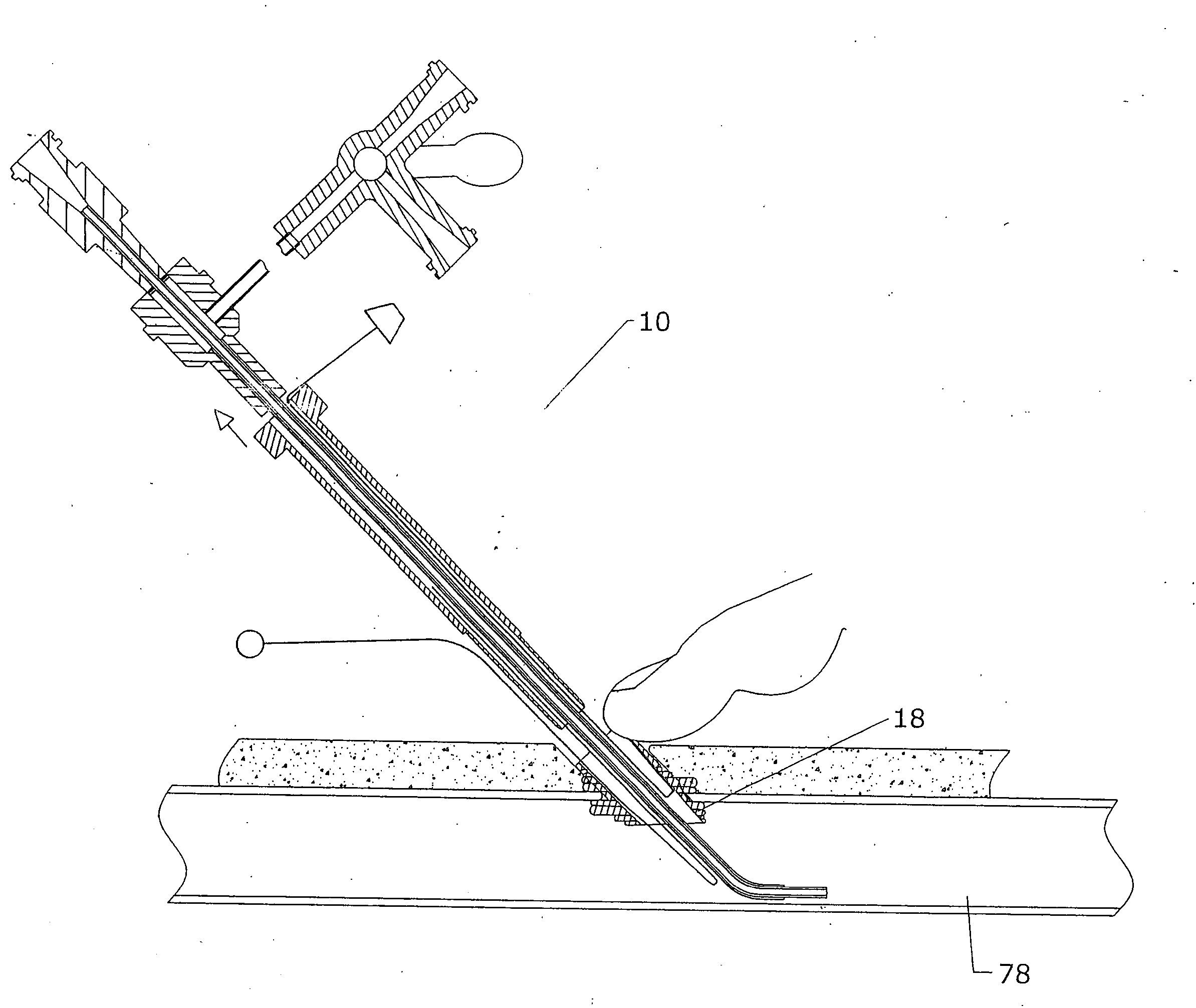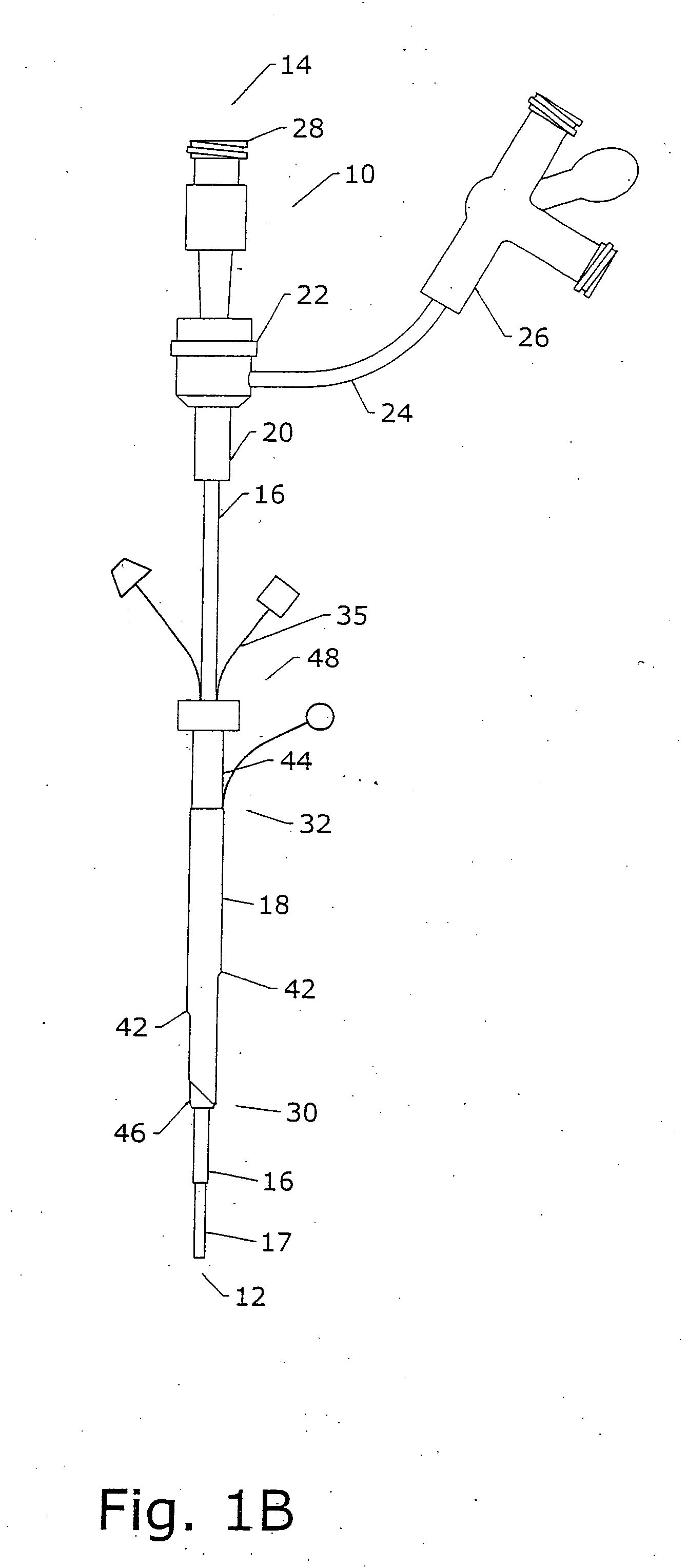Method and apparatus for sealing access
- Summary
- Abstract
- Description
- Claims
- Application Information
AI Technical Summary
Benefits of technology
Problems solved by technology
Method used
Image
Examples
Embodiment Construction
[0042] The present invention is related to an apparatus and a method for sealing a puncture in a tubular tissue structure, such as a blood vessel, or in the wall of a body cavity, with submucosal tissue, another extracellular matrix-derived tissue, or a synthetic bioabsorbable material capable of supporting the growth of endogenous connective tissue in vivo resulting in remodeling of endogenous connective tissue at the puncture site and in formation of a static seal. The apparatus and method of the present invention can be used to seal a puncture in a tubular tissue structure, such as a blood vessel, or in the wall of a body cavity, that has been created intentionally or unintentionally during a surgical procedure or nonsurgically (e.g., during an accident). Punctures made intentionally include vascular punctures made in various types of vascular, endoscopic, or orthopaedic surgical procedures, or punctures made in any other type of surgical procedure, in coronary and in peripheral ...
PUM
| Property | Measurement | Unit |
|---|---|---|
| Length | aaaaa | aaaaa |
| Structure | aaaaa | aaaaa |
| Biological properties | aaaaa | aaaaa |
Abstract
Description
Claims
Application Information
 Login to View More
Login to View More - R&D
- Intellectual Property
- Life Sciences
- Materials
- Tech Scout
- Unparalleled Data Quality
- Higher Quality Content
- 60% Fewer Hallucinations
Browse by: Latest US Patents, China's latest patents, Technical Efficacy Thesaurus, Application Domain, Technology Topic, Popular Technical Reports.
© 2025 PatSnap. All rights reserved.Legal|Privacy policy|Modern Slavery Act Transparency Statement|Sitemap|About US| Contact US: help@patsnap.com



